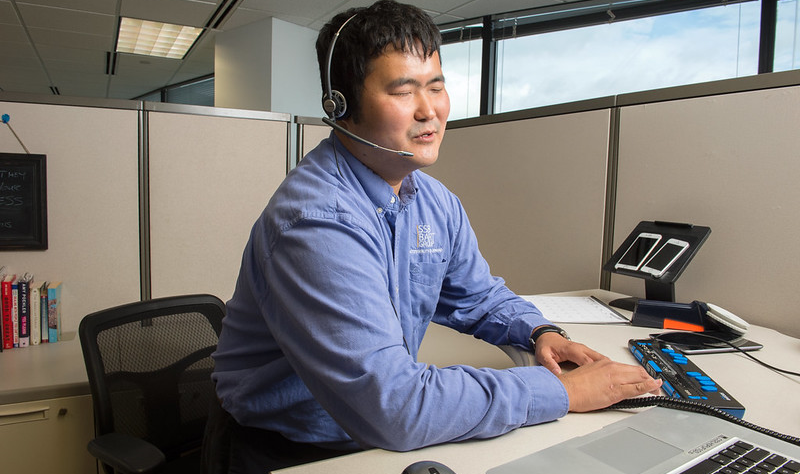
When I start work each morning, the first thing I do is open my laptop. The screen flicks on, displaying the seal of the U.S. Department of Labor. I move the cursor over to the network log in icon and begin the day.
This process may not seem unusual. What makes it distinct for me is that my screen is magnified 500 percent because I have low vision. My computer’s magnifying feature triggers automatically during startup so I can read the menu and navigate the screen. It’s not complicated — it’s just one example of what we mean by accessible technology. With basic digital accessibility features, I can work alongside my colleagues. Without these features, I could not.
That’s why accessible technology is a policy priority for us in the department’s Office of Disability Employment Policy (ODEP), which celebrates its 20th anniversary this year. Looking back, it’s amazing to consider just how much technology has changed since our inception, including its integral role in so many workplaces. Many standard workplace tools such as email, videoconferencing platforms, smartphones and software have seen great strides in accessibility. However, accessibility must continually evolve along with technology. Whether the future of work will be accessible to people like me depends on ensuring emerging technologies are accessible, too.
In this spirit, I’m proud to be part of the team at ODEP helping promote the accessibility of emerging technologies, such as artificial intelligence and extended reality, that we know will significantly shape the future of work, whether through hiring processes, training or communication. Through a range of efforts — most notably our award-winning Partnership on Employment & Accessible Technology (PEAT) — we collaborate with leaders in the technology sector to ensure these tools are accessible from the start, so that more people can contribute to our nation’s workforce and economy.
Consider the role technology tools play in your work. For most, they operate seamlessly in the background without the need for much thought — until they stop working. That frustration when your screen freezes during a presentation or when you lose your work after your server fails? That’s how it feels for countless people with disabilities when we encounter inaccessibility. Full inclusion means employees with disabilities can access a range of necessary supports to excel and help their teams and businesses succeed. Technology is one such support.
Accessibility became part of the built environment through design interventions like the curb cuts on our sidewalks. Because the digital environment constantly changes, “electronic curb cuts” must become as standard as the ones in our sidewalks. It’s a matter of both principle and practicality, of fundamental civil rights and the collective productivity of America’s workforce. It’s a key component of building a future that works, so that all of us can start each workday ready to achieve.
Nathan Cunningham is a policy advisor in the Office of Disability Employment Policy.

 U.S. Department of Labor Blog
U.S. Department of Labor Blog